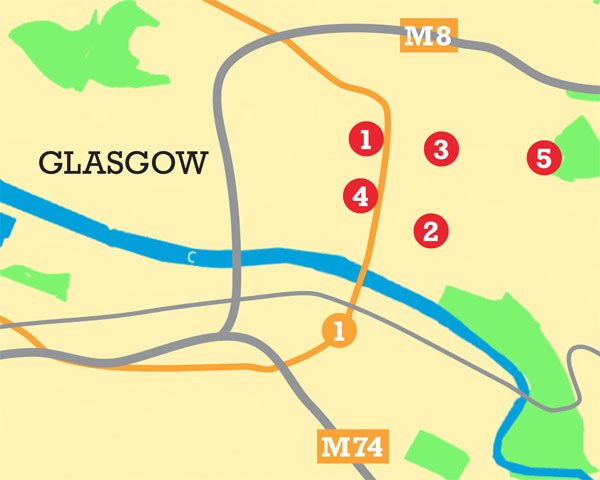Visit the city of Glasgow with a tourist map
Glasgow awaits you with our tourist map, a unique blend of culture, history, and modernity.
From the Bridge Street Park and Ride (1), you can reach the city centre comfortably on foot in 15 minutes.
Buchanan Street
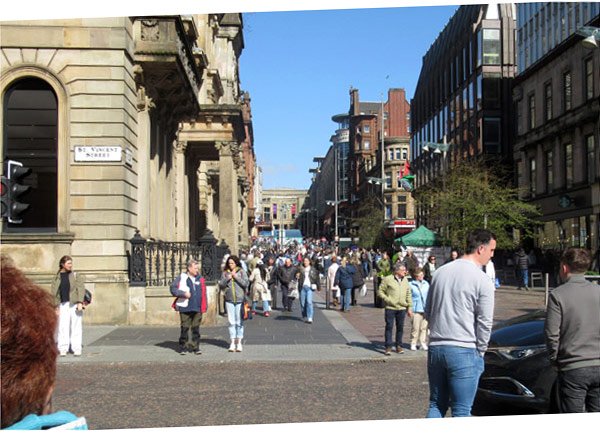
Buchanan Street (1), always bustling with people, is the heart of Glasgow, especially when it comes to shopping, entertainment, and city life.
It is one of the main streets in the city and is famous for its shops, restaurants, cafés, and vibrant atmosphere.
The street connects Buchanan Galleries (a large shopping centre) to George Square, which is another central point in Glasgow.
The murals

The murals (2) of the city, now famous throughout the UK and beyond, have become a distinctive symbol of Glasgow’s cultural and creative identity.
Originally created in response to the desire to regenerate forgotten or neglected urban areas, these artistic interventions have transformed anonymous walls into public works of art that surprise, inspire, and provoke thought.
Many of the most iconic murals are part of the “City Centre Mural Trail,” an official route that guides visitors to the works scattered throughout the city centre.
The initiative, promoted by the City Council, has successfully involved local and international artists, creating a constantly evolving open-air museum.
These works not only beautify the urban landscape but make it alive, participatory, and connected.
They invite passersby to slow down, lift their gaze, and interact with the surrounding space in a new way.
Many tourists come to Glasgow specifically to follow the trail of these works, photograph them, discover their creators, and understand their meanings.
But perhaps even more importantly, the murals speak to those who live in the city every day, reminding them that art can exist anywhere, even in the most unexpected places.
The City Chambers
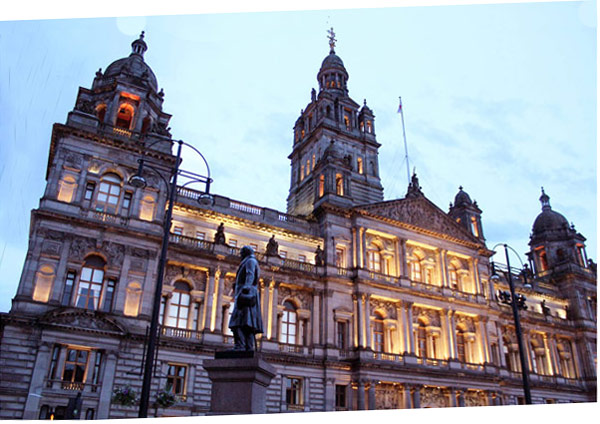
This majestic City Hall (3) is much more than an administrative centre; it is a true symbol of the city’s prestige, ambition, and Victorian past.
Inaugurated in 1888 by Queen Victoria, the City Chambers represents one of the finest examples of civic architecture in the UK and continues to enchant visitors with its monumental elegance.
The richly decorated exterior façade immediately captures attention with its harmony of columns, sculptures, and classical details that recall ancient Rome, reflecting the pride and confidence with which Glasgow faced the future at the peak of its industrial power.
However, it is by stepping through its doors that the true journey through time begins. The interior of the City Chambers is a triumph of Italian marble, golden stuccoes, frescoed ceilings, and dramatic staircases that tell the story of a Glasgow proud of its role as a key player in modern Scotland’s history.
One of the most spectacular spaces is the central staircase, often described as one of the most beautiful in Europe.
Entirely built of Carrara marble, it gracefully winds over three floors without the use of iron supports.
The reception rooms, such as the Council Chamber and the Banqueting Hall, offer a privileged view of Victorian art and craftsmanship, with stained glass windows, finely carved wood paneling, and imposing chandeliers hanging like jewels suspended in time.
The City Chambers is open to the public through free tours held several times a week.
Modern Art Gallery
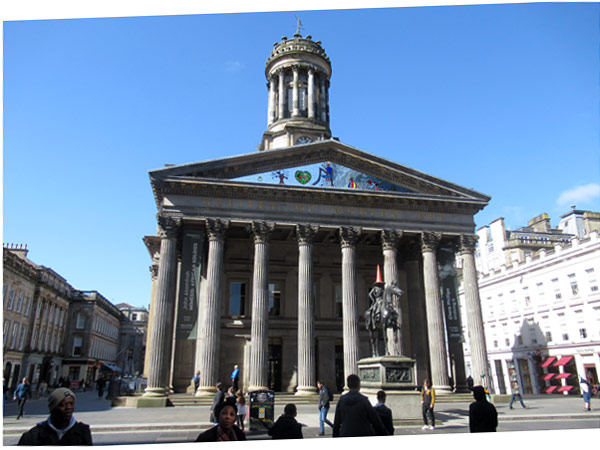
In the heart of the city, between the elegant architecture of Merchant City and the shop windows on Queen Street, stands the Gallery of Modern Art (4), simply known as GoMA.
Its neoclassical façade, framed by majestic columns and topped with a dome, is familiar to anyone visiting the city, especially because of the iconic — and ironic — statue of the Duke of Wellington with an orange traffic cone on his head, an unofficial symbol of Glasgow’s ironic and nonconformist spirit.
Entering GoMA is like stepping into a world where contemporary art freely engages with the public.
It is not a gallery that simply displays objects to be admired in silence: it is a living space, inviting reflection, discussion, and questioning.
The four main galleries are arranged around a bright and harmonious central atrium.
Some installations are provocative, others poetic, but all leave an impression.
On the ground floor, there is a small bookstore and a café, where it is pleasant to stop for a coffee after the visit, perhaps observing the city life flowing in front of the entrance.
Admission is free.
St. Mungo’s Cathedral
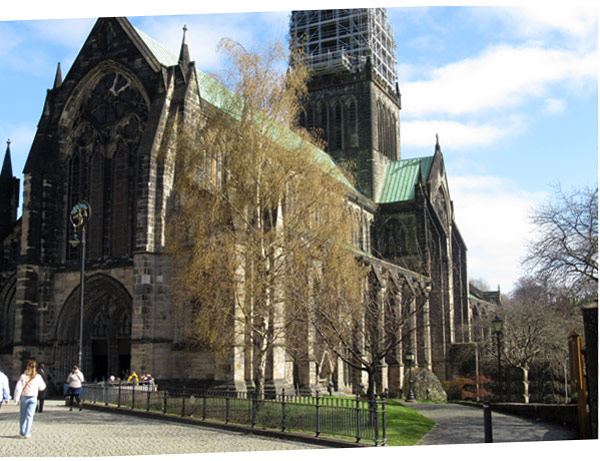
Dedicated to the patron saint of the city, this cathedral (5).
It is open to the public for free every day, but visitors must respect the schedule of religious services, which may cause temporary closures during Masses.
Built between the 12th and 13th centuries, it is the only medieval cathedral in Scotland to have remained intact after the Protestant Reformation of 1560.
Constructed in Gothic style, it features an imposing structure with stained-glass windows, pointed arches, and flying buttresses.
The oldest part of the cathedral is the crypt, which holds the relics of St. Mungo, dating back to the 12th century.
The main nave is extraordinarily majestic and is one of the most beautiful in all of Scotland.
The cathedral is located next to a large Victorian cemetery that stretches across a hill, famous for its elaborate and monumental tombs of important historical figures.
As you ascend, you can enjoy a spectacular view of the city.

GLASGOW TOURS, All the Activities and Interesting Cultural Things to Do in the Area

